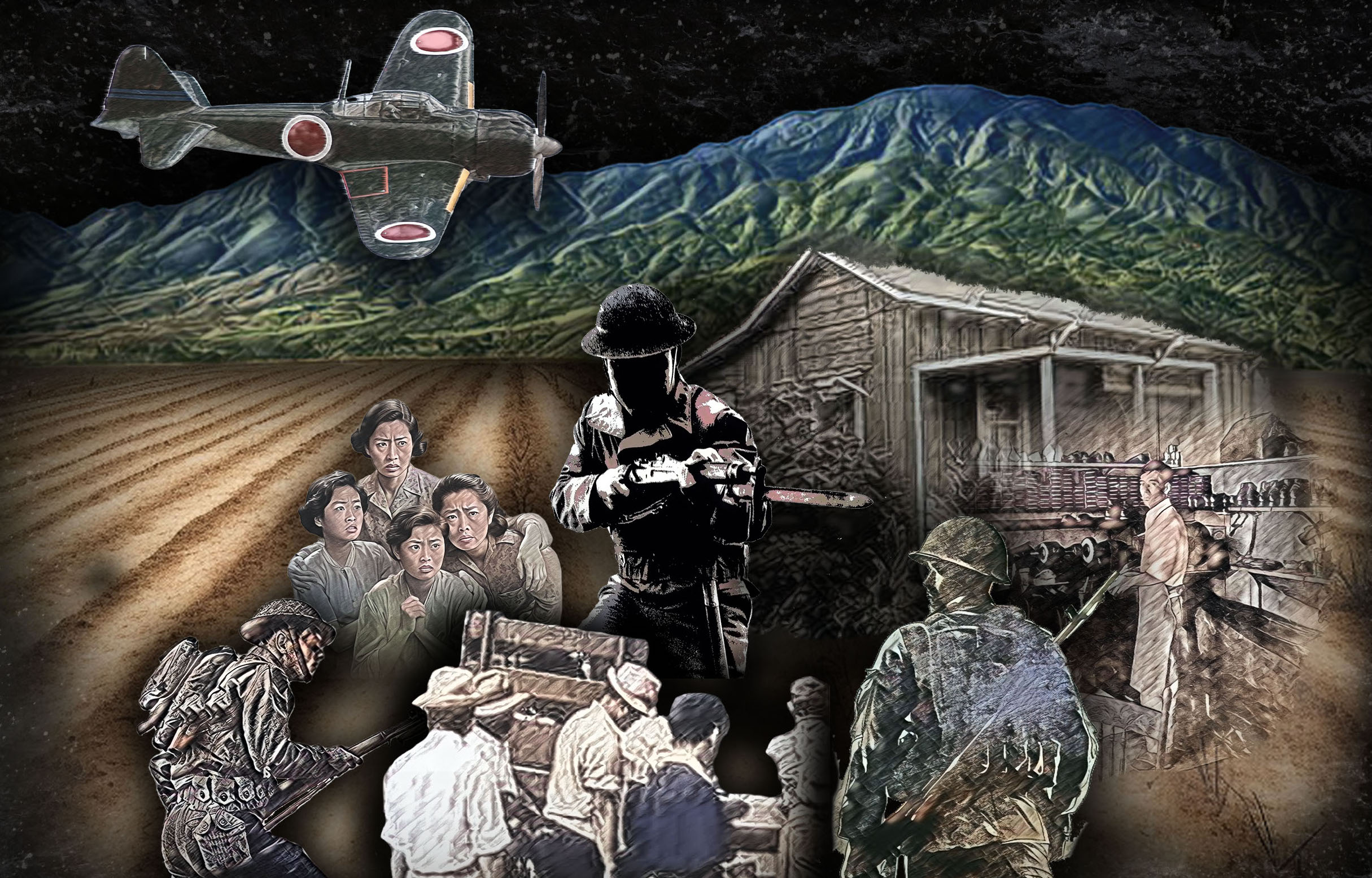Poster for documentary “Removed by Force: The Eviction of Hawai‘i’s Japanese Americans During WWII,” which will be coming to the mainland for several screenings beginning in 2024
The documentary about Hawaii JA’s Redress fight is a boon for Honolulu JACL.
By George Toshio Johnston, Senior Editor
Odds are that if you’re an adult Japanese American living in the mainland United States, you are well aware that during World War II, the federal government removed and incarcerated more than 125,000 people of Japanese ancestry from the West Coast, regardless of whether one was a U.S. citizen or a Japanese national with legal permanent resident status who, at the time, would have been proscribed from becoming a naturalized citizen.
And, you probably know that in August 1988, Japanese Americans succeeded collectively in using their First Amendment right to “petition the Government for a redress of grievances” via the Civil Liberties Act of 1988, which resulted in not only monetary compensation ($20,000 per still-living person so treated) but also an apology from the federal government, signed by its chief executive, the president of the United States of America.
But did you know that something similar occurred in Hawaii, that there were Japanese Americans who were also forced from their homes in the aftermath of Japan’s attack on Pearl Harbor? And this group of approximately 1,500 people whose rights were violated during WWII had to then fight to also receive redress compensation and apology?
Or, that the JACL’s Honolulu chapter was instrumental for winning this legal wrangle?
If this truth is new to you, don’t feel too badly. Turns out that even on the islands, this was a story largely unknown to many locals.
Until now.
❖❖❖
Thanks to a new documentary titled “Removed by Force: The Eviction of Hawai‘i’s Japanese Americans During WWII,” this overlooked-but-important story has been met with gratitude and enthusiasm across Hawaii, from Honolulu to Maui to the Big Island.
And, beginning next year, “Removed by Force” is coming to the mainland.
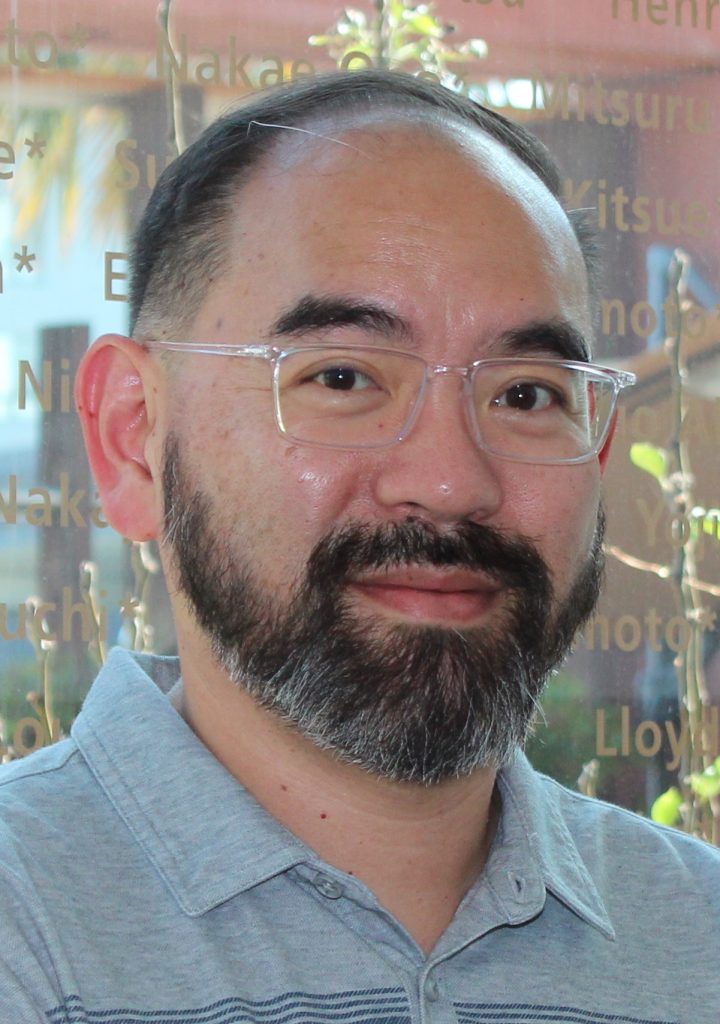
Ryan Kawamoto, who co-wrote, co-executive produced, directed and edited the new documentary “Removed by Force” (Photo: George Toshio Johnston)
Directed, written and edited by filmmaker Ryan Kawamoto, who co-executive produced it with William Kaneko, and presented by the Honolulu chapter of the Japanese American Citizens League, “Removed by Force” is a documentary that tells a subchapter of a subchapter of U.S. history that to this day many Americans are still either unaware of — or misinformed about: what happened after President Roosevelt signed Executive Order 9066.
Inked on Feb. 19, 1942, EO 9066 authorized the military and the federal government to, euphemistically, “evacuate” and “relocate” anyone of Japanese ancestry living along the West Coast’s “Exclusion Zone” to “internment camps” — for their “own safety” — under the guise of “military necessity.”
Many decades later, the government’s Commission on Wartime Relocation and Internment of Civilians would conclude that those actions — forced removal and subsequent incarceration at concentration camps located in remote and desolate inland areas — were actually the result of “racial prejudice, wartime hysteria and the failure of political leadership.”
“Military necessity,” meantime, was a canard, a convenient way to effect the removal of an unpopular nonwhite ethnic minority and seize valuable agricultural land owned by that group.
Regarding the different treatment that Japanese Americans in Hawaii and Japanese Americans on the mainland each received, the popular narrative has been that because of the proportion of a large JA population in Hawaii to everyone else in the islands, it was unfeasible to do a mainland-style “remove and incarcerate” operation — and, furthermore, the labor of Japanese Americans was needed for the war effort.
In other words, building mainland-style War Relocation Authority Centers — of which there were 10, in California, Idaho, Utah, Colorado, Wyoming, Arizona and Arkansas — that each held thousands of people of Japanese ancestry in Hawaii could not happen.
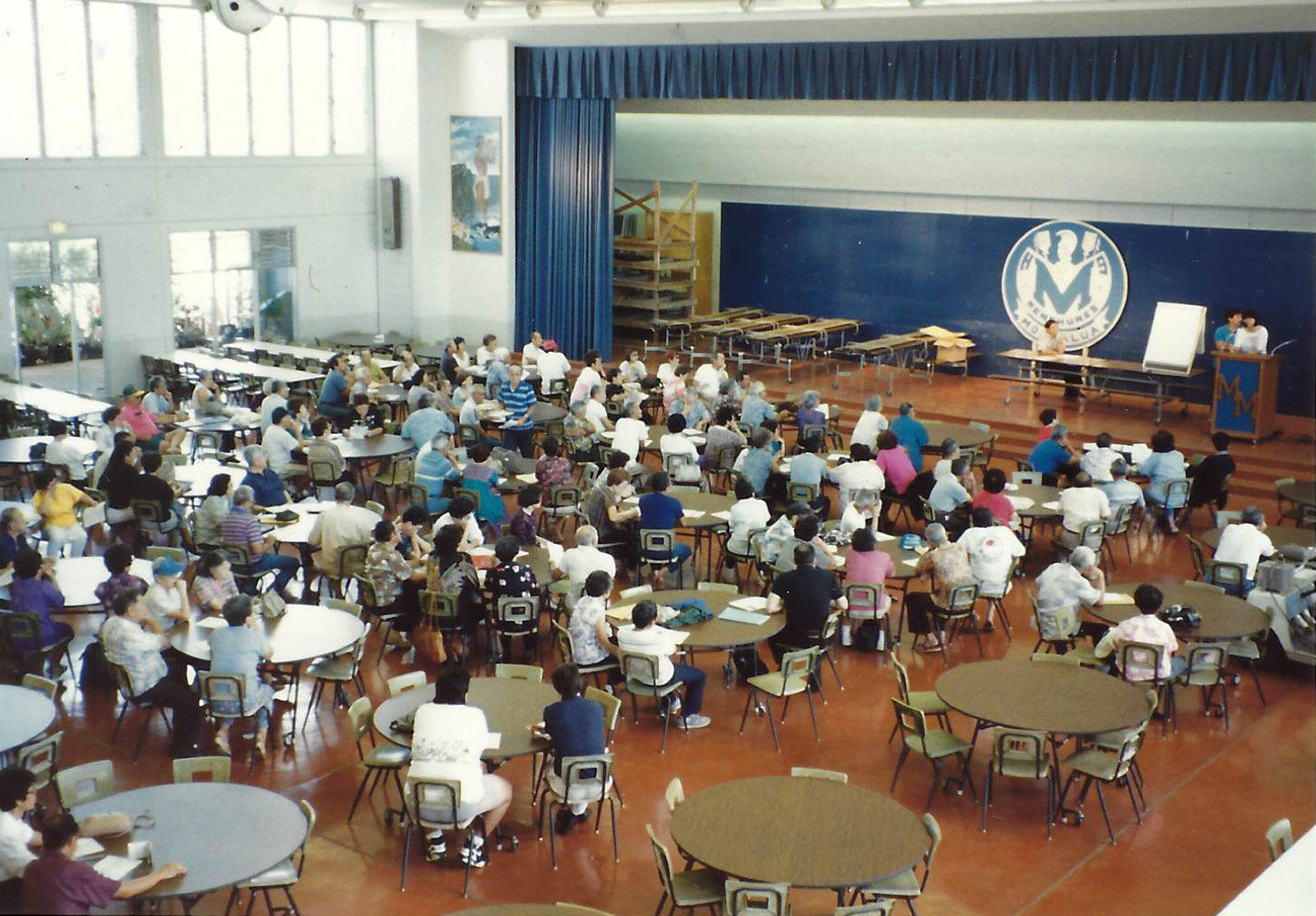
Redress workshop organized by the JACL’s Honolulu Chapter at Moanalua High School in the 1990s is attended by those whose rights were violated when they were evicted by the U.S. government during WWII (Photo: Honolulu JACL)
Although essentially true, “Removed by Force” adds layers to that narrative, showing that despite the differences in the experiences, scope and scale of mainland Japanese Americans and Hawaii Japanese Americans, the effect of governmental overreach was also felt in Hawaii.
❖❖❖
Since its completion earlier this year, “Removed by Force” has made a splash in Hawaii. “We had three screenings at the Hawaii Convention Center theater, which sold out,” Kaneko said. “I mean, you’re talking like 450 seats-plus. And then we had two screenings on the Big Island, another two screenings on Maui. We did presentations before the Hawaii Bar, at the Federal Bar Assn. We did one before the National Asian Pacific American Bar Assn. We also did one at the UH law school. So, we’ve been getting out.”
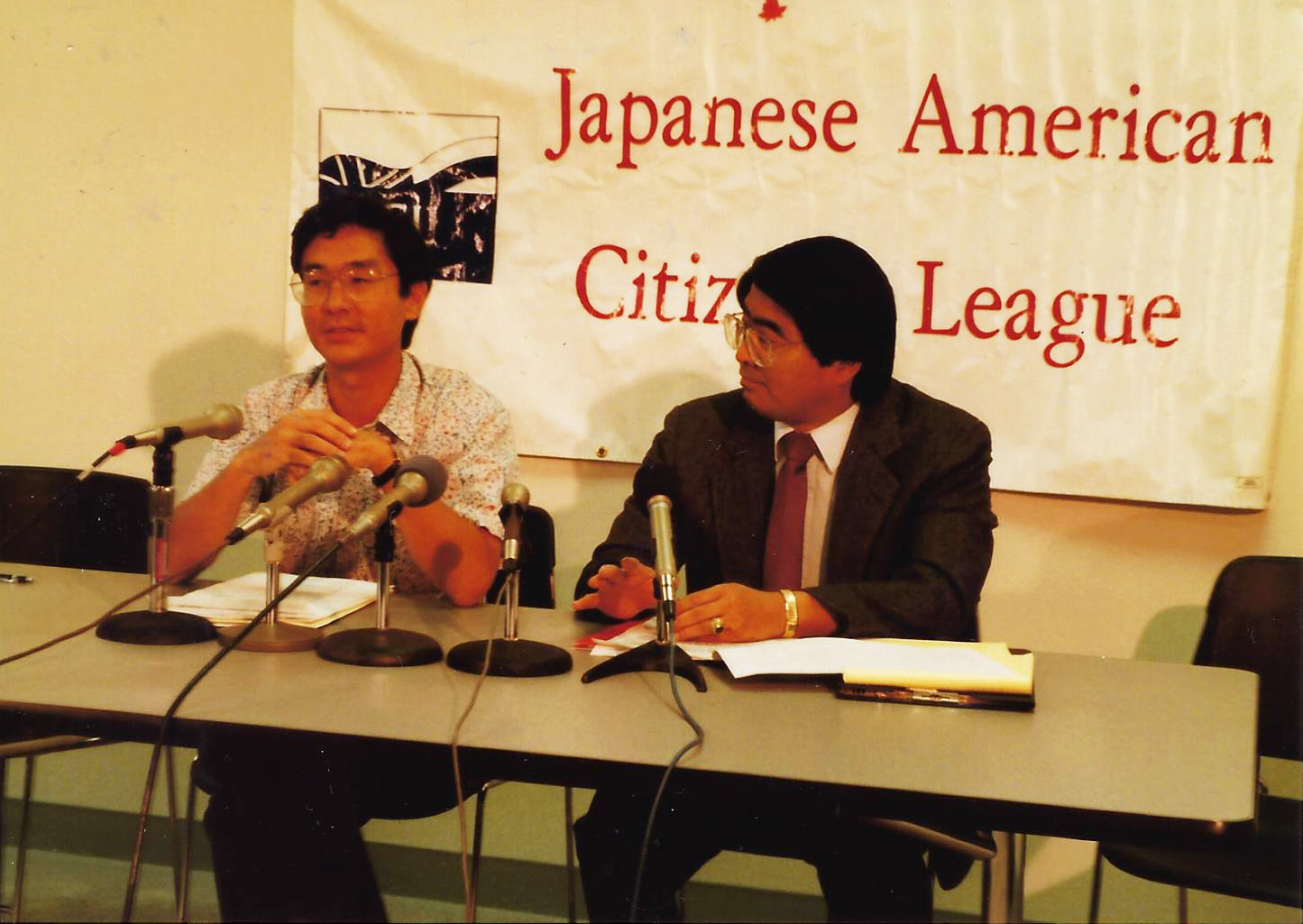
William Kaneko, past president of the Honolulu JACL Chapter and Clayton Ikei, the chapter’s legal counsel, speak at a press conference about the Lualualei case. (Photo: Honolulu JACL)
On June 29, it was screened in Honolulu, with four state governors in attendance, as well as the sitting governor, Josh Green. (It’s worth noting that “Removed by Force” screened in Los Angeles in July at the JACL’s National Convention.)
It was also broadcast on local television four times: once on Hawaii’s PBS affiliate on Sept. 29 and three times (Nov. 12, 19 and 20) commercially on KHNL and KFVE. It was also screened during October’s Hawaii International Film Festival, where it was nominated in the category Best Made in Hawaii Feature Film.
For the filmmakers, the response to “Removed by Force” has been a gratifying experience that exceeded their expectations. After it aired on local TV, Kawamoto said, “Reaction was great. Lots of positive comments about it. People wanted to know more and wanted to see it again.” The documentary also spawned local newspaper and TV coverage.
Kawamoto also told the Pacific Citizen an anecdote that spoke to why this story of Japanese American removal in Hawaii was not well-known.
“One of the people featured in the film, whose family was kicked out from the farm, basically, he brought his whole family to this screening,” Kawamoto said. “And at the end of the screening, a question was asked. The question was, ‘How have you told this story to your family?’ and his 55-year-old son yells out, ‘My father never told us what happened to our family during the war. First time I heard the story was seeing the film onscreen.’ ”
That story underscores Honolulu JACL Chapter President Minda Yamaga’s observation. “It tells these stories of our local history that had never before been documented, very rarely been discussed, was relatively unknown,” she said. “So, it kind of had that element of discovery — ‘Oh, wow, I didn’t know this!’ That automatically draw folks in.
“But the part that I think was remarkable with how personal and intimate it felt,” she continued. “It just ended up being a really great film. … But what happened was, we had a few sold-out showings, the buzz got around town, people really wanted to see it. I don’t think that the demand has substantially slowed down for viewing.”
From Yamaga’s perspective, “Removed by Force” has had a salutary effect on extant community connections. “That sense of community that we sometimes forget about was really reinvigorated,” she said, referring to the feeling that was in the venues where it was shown.
The documentary also had a quantitative effect on the chapter. One example was that it led to someone who donated money to the Honolulu JACL. Another example was when a parent brought college-age daughters to a screening and one was so moved by it, she reached out later to become a volunteer for the chapter, despite being busy with school.
“I know all civil rights organizations and nonprofits are struggling with connecting to young people,” said Yamaga. “So, I think both the fact that it brought in a new volunteer … we were very excited about that. And that’s just an individual story.”
Yamaga, also an attorney, says the documentary also had a larger effect. “Bill connected us to Ellen Godbey Carson, an attorney, and she’s also a textile artist. She cares very deeply about developing civil rights leaders, social justice advocates. She makes these handmade quilts from vintage kimono fabric … and she’s donated them to multiple organizations that she cares about as a fundraiser.
“So, she donated some of those to us also. We took the message and the funds raised by ‘Removed by Force’ and the additional donation by Ellen and created what we’re calling the Quest to Uncover Innovative Leaders of Tomorrow fellowship — and the acronym, of course, is the QUILT fellowship, inspired by Ellen’s quilts.
“We put out an application directed at high school juniors in October, and we’ve accepted four high school juniors into our QUILT fellowship, three on the island of Oahu, and one from the island of Maui. And each of them are from different high schools around the island, around the state. … I think that everything — the money, the community support, this idea that we can connect with some young people — can be directly linked to ‘Removed by Force.’ ”
❖❖❖
Every good story needs certain elements: a quest that has an uncertain outcome, but whose ending is surprising, satisfying and inevitable. Conflict. Antagonists. Heroes — and those who unexpectedly rise to the occasion to become heroes. “Removed by Force” has all that and more.
One example: A few years after President Reagan signed the Redress bill, Kaneko received a phone call from someone whose family was, literally, removed by force by the military from their home — but not incarcerated. He wanted to know whether he was eligible for redress. Kaneko answered truthfully: “I don’t really know.”
This was the first time Kaneko — or the JACL — had heard about anything like this. A legal determination was made that, yes, their rights were violated, there was no due process. But they needed more than a story to remedy the harm. Evidence was needed.
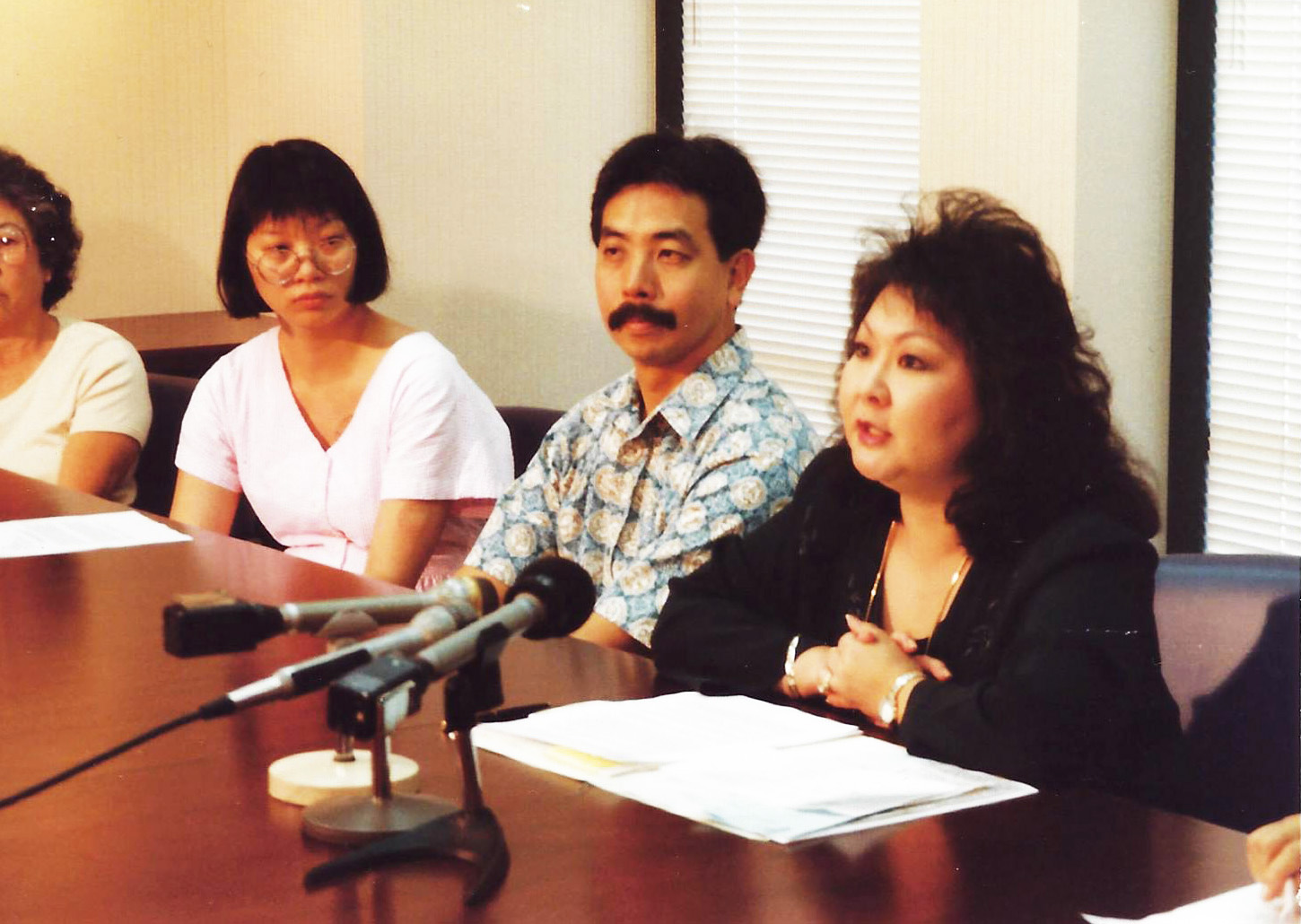
Speaking at a news conference are Mary Beth Wong and Owen Matsunaga, pro bono attorneys, and Allicyn Hikida Tasaka, who was serving as president of JACL’s Honolulu Chapter. (Photo: Honolulu JACL)
In a development not unlike Aiko Herzig-Yoshinaga finding the last original copy of the “Final Report on Japanese Evacuation From the West Coast” in the National Archives that proved there was no military necessity in removing Japanese Americans from their West Coast homes during WWII, “Removed by Force” has its own version of that scenario.
To learn how that went down, one needs to see “Removed by Force.” Fortunately, in early 2024, people on the mainland will be able to see the documentary. Not only will it make the rounds via the film festival circuit, on Feb. 16 and 19, it’s slated to show at the University of Oregon School of Law in Eugene and the Japanese American Museum of Oregon in Portland. It is also scheduled to play on Feb. 21 at California State University, Long Beach, and Feb. 22 at a to-be-determined venue in Los Angeles, followed by screenings in San Francisco (Feb. 24) and San Jose (Feb. 25).
According to Kawamoto, another goal is also to have his documentary broadcast nationally on PBS. After that, something will be figured out for the home market, via streaming and/or physical media.
Not only that, a book by the same name, written by Kaneko and Sara Lin, upon which the documentary was based, will be published in February.
For Yamaga, the documentary puts things into perspective for Japanese Americans in Hawaii, whose experiences during WWII differed from their mainland cousins. “Even though the number of families that were affected was substantially smaller in Hawaii, just seeing the locations, hearing the stories told in the local Pidgin accent made it like all the more relatable. … Anytime something happens, a tragedy, you hear the comments of like, ‘Oh my gosh, I never thought that could happen in my backyard,’ and when it does, it just it crystallizes the problems and the issues and the critical response even more. … When it’s familiar, it just hits the heartstrings in a different kind of way.”
Thanks to “Removed by Force,” she says, “That’s exactly what happened.”

